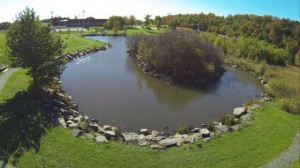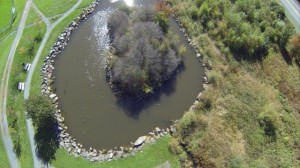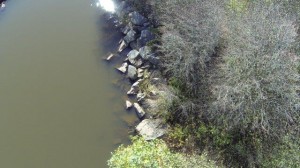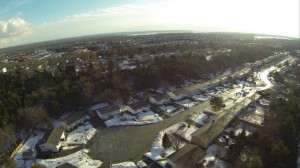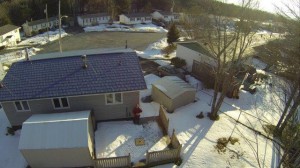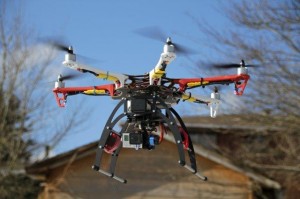The way in which experts are used in civil litigation is changing, at least the main emphasis of their role in the civil litigation process. And these changes are good for counsel and the justice system.
The role of experts in the civil litigation process has been identified in detail in previous postings. (Ref. 1)
Emphasis today
The emphasis today is on (1) the presentation of findings in oral and written reports after a forensic investigation is complete, rather than on testimony in discovery or at trial. And I believe there will be increased emphasis on (2) oral reports – certainly for smaller cases, rather than on written reports.
How experts can be retained
In Canada and the U.S., experts can be retained in one of two basic ways:
- Consulting expert
- Testifying expert
Comments by some lawyers I have worked with suggest these two types of arrangement are understood in eastern Canada.
Based on my experience in this part of Canada, these two methods of retaining an expert can be broken down further:
- Consulting expert and technical advisor to counsel
- Investigating expert: – Oral report
- Investigating expert: – Written report
- Testifying expert; ADR, discovery, trial
- Consulting expert to the judge
The break down reflects and accommodates the changes taking place.
Why the changes in emphasis are good
These changes are good for counsel and the justice system, and the cost effective settling of disputes. This is because:
- Counsel will take cases with greater confidence in their client’s position
- Counsel will be able to monitor costs more easily
- Experts will be retained for their skill presenting their investigative findings in well written reports – not just for their skill investigating the cause of a failure or accident
- A more cost effective level of forensic investigation will be carried out
- The technical findings will go forward more readily, unencumbered by the direct and cross-examination process
What’s causing these changes?
These changes in how experts are used is being driven by:
- Civil procedure rule changes such as Rule 55 in Nova Scotia
- Recognition that the majority of cases involve claims that are small rather than large – fortunately, we don’t have catastrophic engineering failures and terrible accidents very often
- Recognition that the thoroughness – and hence cost, of forensic investigations is not greatly different regardless the value of the claim. Small claim or large, we must go through fairly standard investigative steps
- The fact that the great majority of cases are settled out of court – I’ve seen reported as many as 95% to 97%, and this certain to go higher in light of the rule changes, and,
Comments on how experts can be retained
Following are a few comments on how experts are being retained today for the good of the justice system:
1. Consulting expert
Counsel might initially retain an expert for a general discussion of the case and the technical issues as initially perceived by each.
Such a discussion could be quite brief and based on counsel’s description of the incident. Or of greater length depending on where counsel is at in the civil litigation process. (Ref. 1)
Lengthier discussion would be based on some investigation by an expert. The investigative tasks would depend to some extent on the role assigned the expert. (Ref. 1) At the very least, an expert would read a few documents and visit the site.
The very early emphasis in such discussions should be to provide counsel with technical information to help him or her assess whether or not to take the case. (Ref. 2)
Also, some emphasis on the expert’s early thought on the direction a forensic investigation might lead, with respect to the cause of a failure or accident. Sometimes we have an idea early on – a hypothesis as to cause, that would be checked later during a forensic investigation.
It’s often possible in these discussions to outline the approximate nature of a forensic investigation of the problem.
Very approximate costs to investigate the cause of a failure or accident might be suggested based on the expert’s experience with other cases. At the very least, advice could be given on whether it’s likely to be an expensive or an inexpensive investigation or somewhere in between.
If counsel takes the case, the expert could provide some guidance on preparing a statement of claim or defense. (Ref. 1) This involvement is important. I’ve seen cases where, based on the technical issues, the wrong party was named in one instance and responsible parties were not named in two others. I was retained some time after these actions were started – years after in one case.
The next two ways of retaining an expert must be evaluated carefully, particularly, in going from an oral report to a written report. “An expert’s report is a critical, make-or-break document. On the one hand, a well-written report will make testifying later at discovery and trial much easier … On the other hand, a poorly written report … can turn discovery or trial into a nightmare …” (Ref. 3) And, I might add, turn rebutting the report before discovery into a cakewalk.
An argument can be made, and serious consideration given, for peer review of a written report. (Ref. 4) This is standard practice in some engineering and scientific fields.
2. Investigating expert: Oral report
Based on the results of the initial discussions, counsel may instruct a consulting expert to begin investigating the cause of the failure or accident. To begin the forensic engineering investigative process. (Ref. 1)
The objective would be to gather some data to support an oral report of findings to counsel.
An oral report allows for additional discussion of the case. It also gives counsel data on which to base a decision to carry out a complete forensic investigation. And some data on which to base a decision to commission a written report.
There is emphasis at this stage on some data. This is because the expert would report to counsel as soon as relevant and meaningful data had been collected. He would not necessarily wait until the end of a complete forensic investigation.
The expert’s work at this point is very likely to be characterized by preliminary investigative work. Also possibly by a factual reporting of data with little or no interpretative reporting. This type of reporting is used often enough in some fields, e.g., geotechnical engineering.
Some of the necessary preliminary work might be identified in discussion during the Consulting Expert stage. For certain, the expert would recognize when he had some useful data justifying interrupting the investigation and reporting to counsel.
But it’s also possible the investigation will have been completed before significant data became available. Or this was considered the most expedient way – to complete the forensic investigation and gather all data before reporting.
Even if the investigation was completed, only an oral report would be given at this stage as required by counsel.
The oral report, in addition to facilitating additional discussion of the case, also allows counsel to assess if it’s in the client’s interest to incur the cost of completing the forensic investigation and preparing a written report.
3. Investigating expert: Written report
Counsel could retain the consultant to prepare a written report on the forensic investigation according to the requirements of civil procedure rules governing experts. The report would describe the forensic investigation in detail, the data gathered, the analysis carried out, the conclusions and the reasoning leading to these, and the opinion on cause stated.
The forensic investigation would be completed before preparing a written report if this was not done for the oral report stage.
The report would likely be distributed to all parties to the action. This would in turn generate a number of questions on the report by the different parties to be answered by the expert. It could also result in a rebuttal report which might need to be responded to by the expert as well.
4. Testifying expert
In the unlikely event that the action goes to discovery and trial a consulting expert might be required to testify on his investigation and subsequently be cross-examined on his testimony and report.
In some areas of Canada and the U.S., a testifying expert is retained in addition to an investigating expert. The testifying expert would present the investigating expert’s work and findings at discovery and trial. Testifying is a skill some investigating experts have and some don`t, hence the need. I can imagine this would be for larger cases. Forensic engineering investigation in eastern Canada is characterized by many smaller cases.
5. Consulting expert to the judge
The judge might retain an expert independent of counsel. This is done occasionally in eastern Canada. I understand it`s quite prevalent in the U.K. I believe this is likely to occur less frequently with fewer cases going to trial. Also because of the change in emphasis in how experts are retained. And the fact that particularly well-written expert reports will derive from the changes.
References
1. A bundle of blogs: A civil litigation resource list on how to use forensic engineering experts. Posted November 20, 2013 http://www.ericjorden.com/blog/2013/11/20/a-bundle-of-blogs-a-civil-litigation-resource-list-on-how-to-use-forensic-engineering-experts/
2. The role of a professional engineer in counsel’s decision to take a case. Posted June 26, 2012 http://www.ericjorden.com/blog/2012/06/26/the-role-of-a-professional-engineer-in-counsels-decision-to-take-a-case/
3. Mangraviti, Jr. James, J., Babitsky, Steven, and Donovan, Nadine Nasser, How to write an expert witness report, SEAK Inc., Falmouth, Mass. 2014
4. Peer review in forensic engineering and civil litigation. Posted November 26, 2013 http://www.ericjorden.com/blog/2013/11/26/peer-review-in-forensic-engineering-and-civil-litigation/

